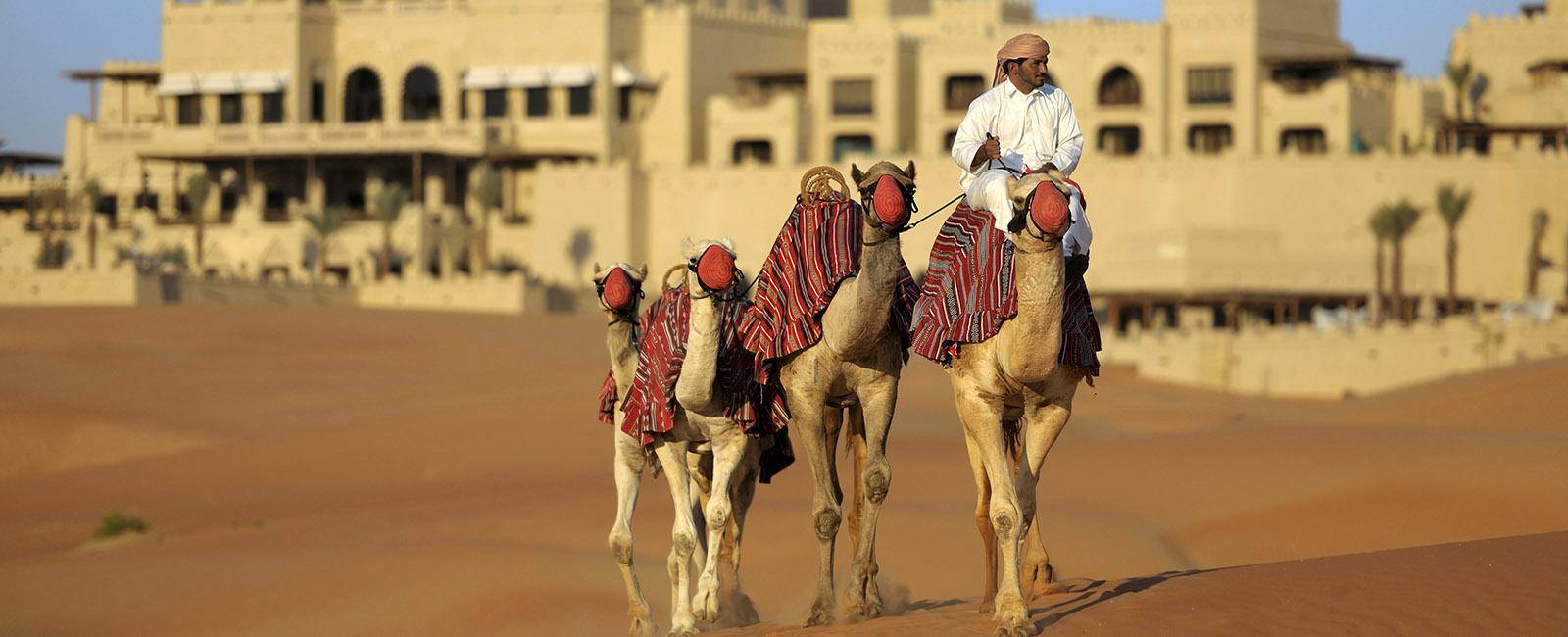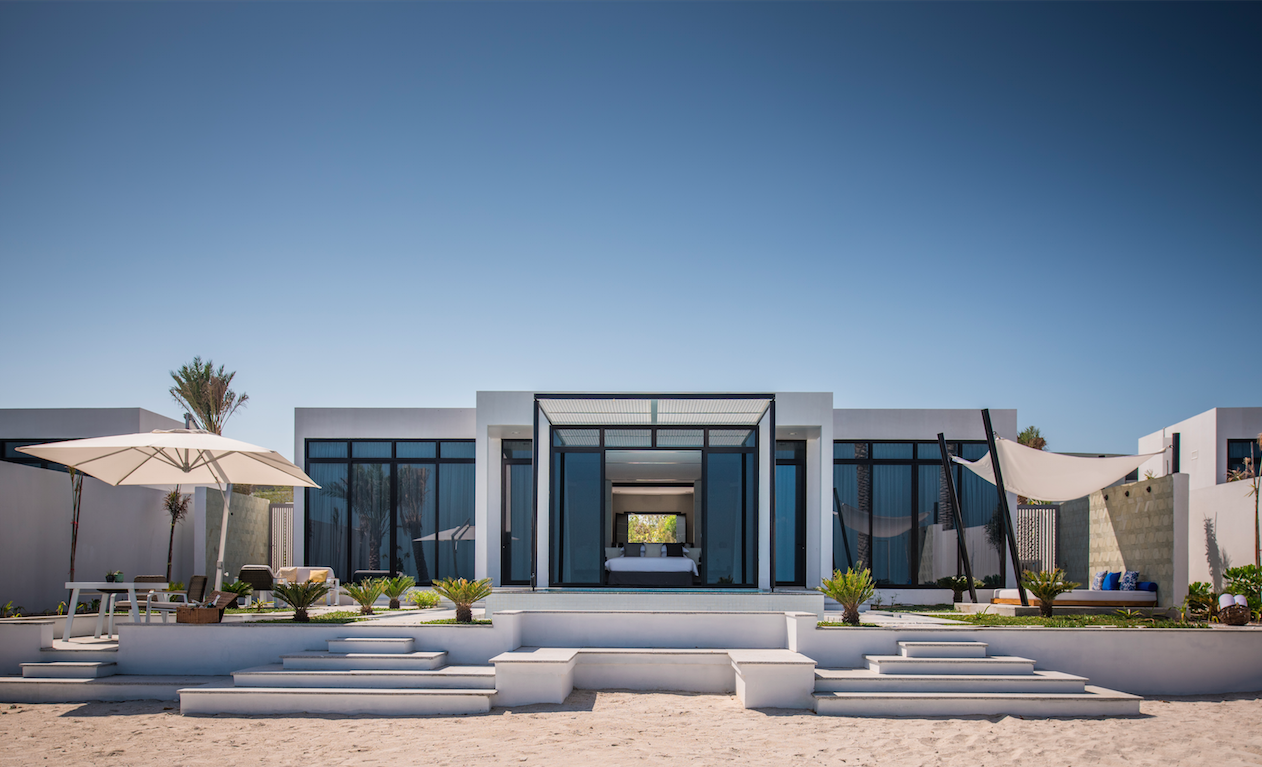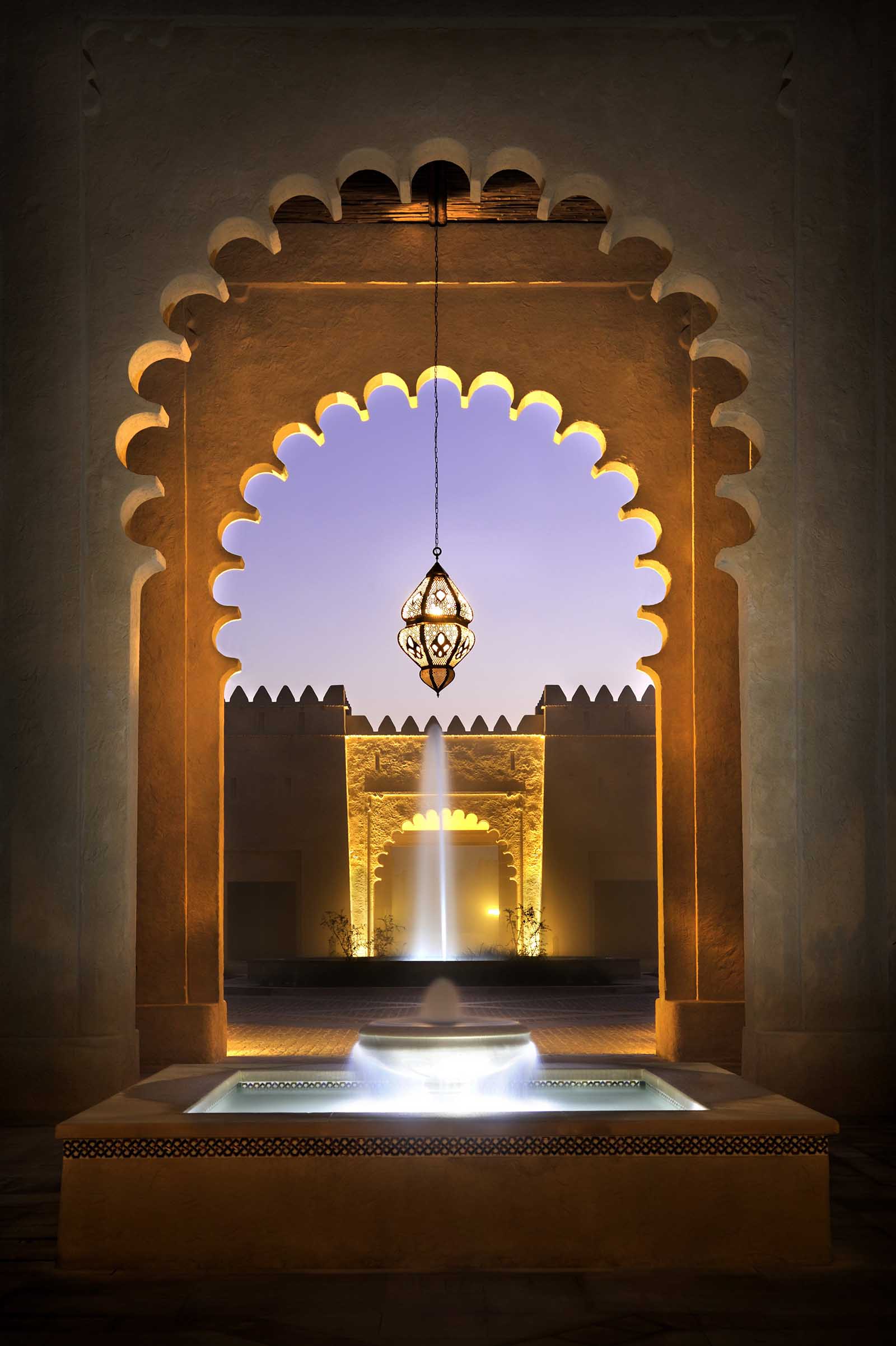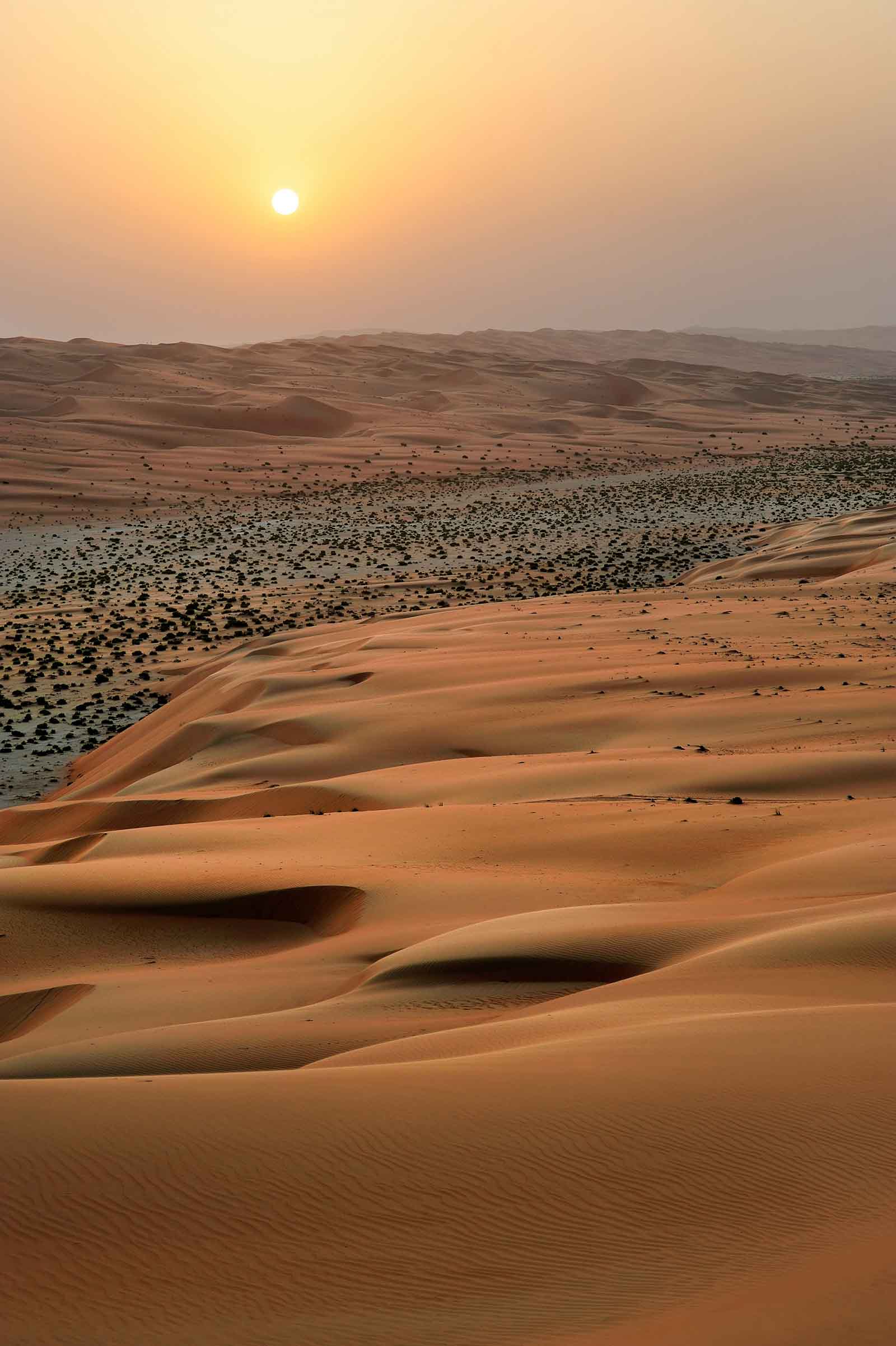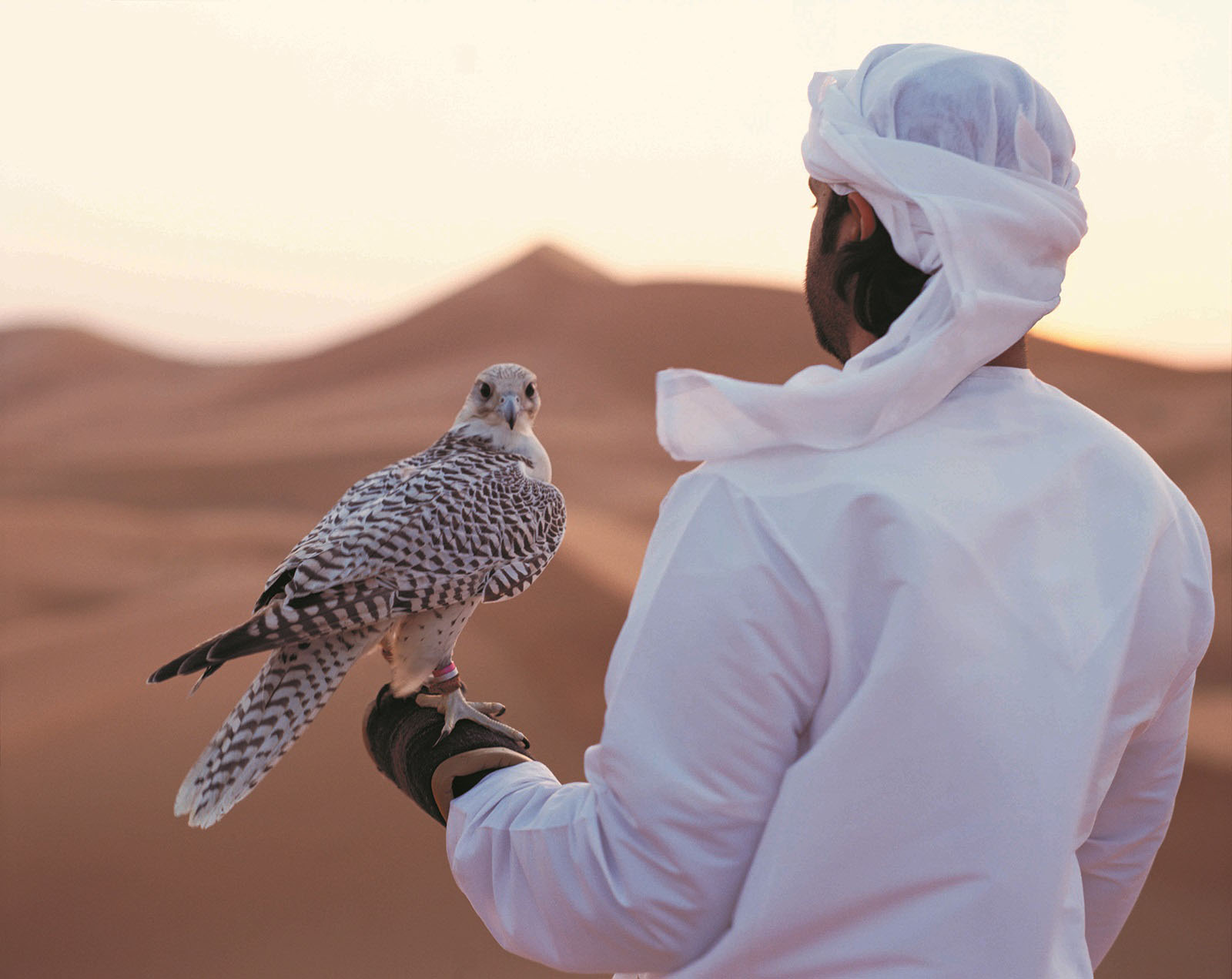
Abu Dhabi may be the largest of the United Arab Emirates but it packs a lot into its island capital city of the same name, a gleaming metropolis of towering skyscrapers, designer shopping malls and luxury hotels. But beyond the must-see attractions that include the Emirates Palace and Sheikh Zayed Grand Mosque, a stroll along the Corniche and shopping ’til you drop at the Yas Mall (attached to Ferrari World), there’s a very different side of Abu Dhabi to discover. Not far beyond the city limits a whole new adventure awaits…
On safari
I’d heard about the legendary Sir Bani Yas long before I set foot on the island. With its savannah grasslands, free-roaming cheetahs and giraffes and African-inspired glamping tents, it is hard to believe I’m not in the heart of Africa itself.
Sir Bani Yas is about 250 kilometres from Abu Dhabi, a 30-minute flight from the International Airport or about two and a half hours by car and a 20-minute boat ride, and is named for the native Bani Yas tribe of the area.
The island’s former owner, Sheikh Zayed bin Sultan al Nahyan, (founding father of the UAE) began to turn it into a conservation area in the 1970s to preserve indigenous flora and fauna – and a few exotic imports. The results speak for themselves: sitting on the deck of my private tent-slash-villa at Al Sahel Villa Resort (one of the three luxury Anantara properties on the island), decorated with wood and African inspired décor, shy Arabian gazelle amble past in small groups while a flock of guinea fowl make full use of my private plunge pool.
In the morning hotel staff bundle us up in Jeeps to tour the landscape and it’s worth the early rise to learn about the history of the island, the conservation projects and, even if through still tired eyes, to look out for the elusive resident cheetahs and giraffes.
For the remainder of the day there are other activities such as hiking, land sailing and kayaking to pass the time but at sunset, a falconry display is truly spectacular. Two expert falconers explain the traditional Bedouin practice of bird training before releasing their own birds into the air where they fly in lightning-fast circles, at the command of their masters, for the delight of spectators below.
Beach idyll
For a beach getaway Zaya Nurai Island is hard to beat. With its powder-white sand, swaying palms and still waters it offers a soothing contrast to the urbanisation of Abu Dhabi’s city centre and yet it’s just a 10-minute boat ride from Saadiyat Island (Abu Dhabi’s planned creative hub with its own Louvre museum and a Guggenheim is yet to be completed).
My biggest dilemma here is whether to spend the afternoon enjoying a spa treatment in the privacy of my spacious villa (with its own pool ready and waiting for a post-treatment dip), or whether to take to the warm Gulf waters for a catamaran cruise or snorkelling session.
It would be easy to spend a few days here barely in contact with another soul if I take advantage of the bespoke dining experience and allow the chef to whip up a gourmet meal of grilled meats and Arabic side dishes such as creamy hummus and flavoursome cheese sambousek (pastries) to enjoy al fresco-style on the villa deck as the sun sets. Castaway paradise indeed.
Mirage at the oasis
I’ll be honest – there are better desert experiences to be had than the well-worn tourist tracks of sunset desert safaris. It’s quite a drive (about 150km south west of the city) although an easy one – but keep an eye out for the occasional camels crossing – to the Liwa Oasis, a green belt of date farms and rustic Bedouin villages which offer a rare insight to local life beyond the glittering city lights.
Along the way, make a stop at the Emirates National Auto Museum, home to the private car collection of Sheikh Hamad Bin Hamdan Al Nahyan. A highlight of the collection is the giant Dodge truck built to eight times the standard size – it’s actually a towable caravan with a four-bedroom apartment in its tray.
About 20 minutes beyond the towns, driving into what seems like a vast and barren desert landscape Qasr Al Sarab (Palace of the Mirage) emerges like a magic castle from the red dunes. All rooms and suites boast panoramas of the incredible Empty Quarter, the largest sandy expanse in the world. The serenity and beauty of the dunes stretch off into the distance and change colours rapidly with the moving sun.
Again, it pays to wake early to take a sunrise tour (in small groups of less than 10), just a 15-minute drive from the resort, to admire the view and perhaps some shy Arabian gazelles. There’s plenty of time to nap later on a sun lounge beside the resort’s pool.
Cruise the forest
Tucked between Abu Dhabi’s main island and Umm Yifenah Island is the Eastern Mangroves forest, home to more than 100 species of birds and aquatic life. A tranquil kayak cruise is a good way to view it and departs from the Eastern Mangroves Promenade. I arrived just as the sun was rising (again!), when birds are at their most lively and the city is at its most quiet.
Thankfully, it’s not necessary to be an experienced kayaker to join the tour with Sea Hawk Water Sports – the guide of our small group was more than happy to explain the basics and help along the way. Gently winding through the aquatic pathways lined with green mangroves, it didn’t feel like we had spent two hours on the water by the time we made it back to the promenade. If that works up an appetite, there are a few eateries such as Café Blanc, which serves up mezze and Flooka, a seafood restaurant with a view of the mangrove forest from its patio, in the new Eastern Mangroves Promenade development.
GETTING THERE
CREDITS

